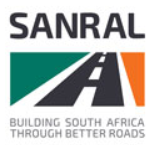N1 and N2 are 'parking lots'
Years of underinvestment in the road infrastructure in and around the City of Cape Town is now hugely evident in the significantly increased duration of morning and afternoon-evening peak traffic lockdowns on the entire road network.
The recent Tom Tom survey of traffic conditions has shown the Mother City is now the most congested city in South Africa.
"This has turned the road network into virtual parking lots," says the communications manager of the South African National Roads Agency (SANRAL), Vusi Mona.
An example of what this underinvestment does can be seen on the R300 freeway. It was upgraded by SANRAL in 2010 to improve safety and capacity. It operates at the highest level of service to motorists, but because of the lack of upgrading of interconnecting arterials such as Old Paarl Road, Van Riebeeck Road and the Stellenbosch Arterial by the city, traffic on the R300 comes to a complete standstill during peak times.
Traffic simply cannot exit the freeway, causing major delays and unsafe operating conditions due to the massive queue build-up on such a high-speed road.
Unfortunately, road users should start getting used to much more of this, as the city continues to delay infrastructure projects, says Mona.
"In addition, road users on the N1 and N2 can attest to the fact that even daily road maintenance and the smallest of incidents such as bumper bashes result in significant delays and utter chaos not only on the freeways, but also on the surrounding connecting roadways," says Mona.
He says it is peculiar that the city's expert advisers had initially advised their principals that the upgrades and improvements on the N1/N2 were not required.
But, more recently, it stated publicly that SANRAL should be paying for these from its "own funds". It is unclear what is meant by "own funds".
SANRAL gets an allocation from National Treasury via the Department of Transport. In the current financial year, the agency has received approximately R12.5 billion for its non-toll road network, which is 18 283km in length.
The N1/N2 Winelands upgrade, which is 175km long, requires an estimated R10 billion investment in 2010 terms - and that is just for the initial construction works. As for the toll revenue that the agency collects, that is ring-fenced for use on those particular toll roads.
"The assertion that SANRAL must use its 'own funds' betrays a lack of understanding by the city of how national roads are funded," says Mona.
He warned that every day road upgrades are delayed worsens the situation. And eventually the road network will have to be improved anyway. Why delay then?
